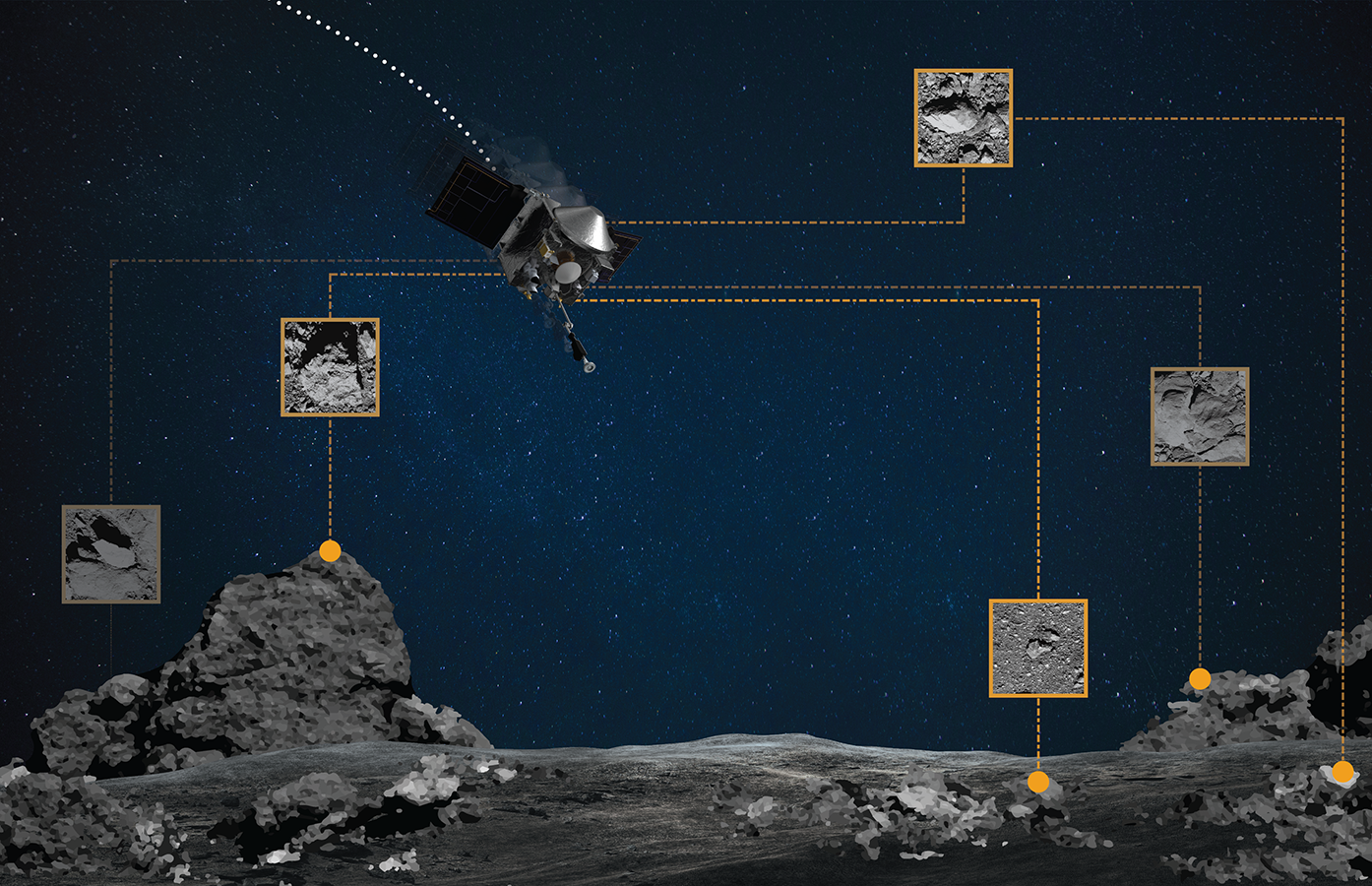NASA asteroid probe will dodge building-size boulders to snatch sample of Bennu
Beware of giant space rocks.
Snatching a piece of asteroid Bennu was supposed to be — well, not easy, but certainly manageable: scope out the space rock, find some flat spots, swoop down at one, come back home.
But when NASA's OSIRIS-REx spacecraft arrived at Bennu in December 2018, the scientists and engineers on the mission realized that the asteroid was much, much rockier than they had expected. Like, boulders everywhere. Boulders as big as buildings. Boulders you do not want your fancy spacecraft to bang into.
OSIRIS-REx, which launched in 2016, has a lidar navigation system that would have allowed the spacecraft to recognize obstacles based on the echoes of a light beam the probe produced. But once the mission revealed Bennu's surface in all its rocky glory, scientists and engineers decided it was time to come up with something new.
Related: OSIRIS-REx: NASA's asteroid sample-return mission in pictures

"Boulders as big as buildings. Boulders you do not want your fancy spacecraft to bang into."
The result is a process the team is calling Natural Feature Tracking, which relies on the massive image database that OSIRIS-REx has built up in the months since it arrived at Bennu and began taking images of the space rock from every angle possible.
As the probe embarks on a sampling attempt, it will begin taking still more such photos, which its computer system will automatically compare to the archived images showing the path it should be following. If those views don't line up, the spacecraft will automatically retreat for another attempt, rather than risk damage on the perilous surface.
If the system works as planned, it should boost OSIRIS-REx's accuracy: Whereas its lidar system was only designed for accuracy within a site 164 feet (50 meters) across, Natural Feature Tracking will be accurate enough to tackle a target area just 10% that size, NASA officials said in a statement.
Get the Space.com Newsletter
Breaking space news, the latest updates on rocket launches, skywatching events and more!
Scientists on the OSIRIS-REx mission have selected two target sampling sites on Bennu, dubbed Nightingale and Osprey. The mission's window for sampling opens in late August in order to ensure that the spacecraft can leave Bennu next year. If all goes well, scientists should have their space rock on Earth in 2023.
- This is NASA's best view yet (and closest, too!) of asteroid Bennu
- Surprise! 'Active asteroid' Bennu is a rare particle-ejecting space rock
- How NASA's asteroid sample return mission will work (infographic)
Email Meghan Bartels at mbartels@space.com or follow her @meghanbartels. Follow us on Twitter @Spacedotcom and on Facebook.
OFFER: Save at least 56% with our latest magazine deal!
All About Space magazine takes you on an awe-inspiring journey through our solar system and beyond, from the amazing technology and spacecraft that enables humanity to venture into orbit, to the complexities of space science.
Join our Space Forums to keep talking space on the latest missions, night sky and more! And if you have a news tip, correction or comment, let us know at: community@space.com.

Meghan is a senior writer at Space.com and has more than five years' experience as a science journalist based in New York City. She joined Space.com in July 2018, with previous writing published in outlets including Newsweek and Audubon. Meghan earned an MA in science journalism from New York University and a BA in classics from Georgetown University, and in her free time she enjoys reading and visiting museums. Follow her on Twitter at @meghanbartels.










